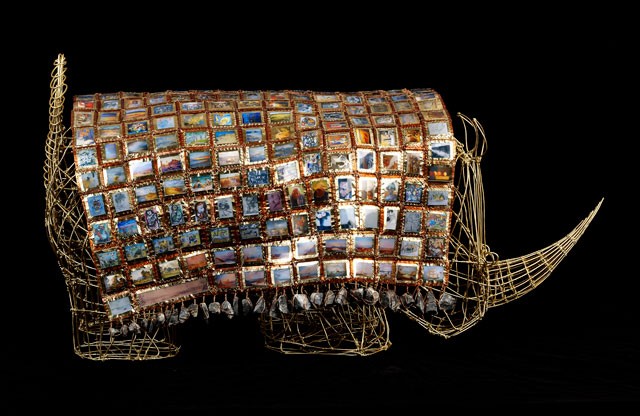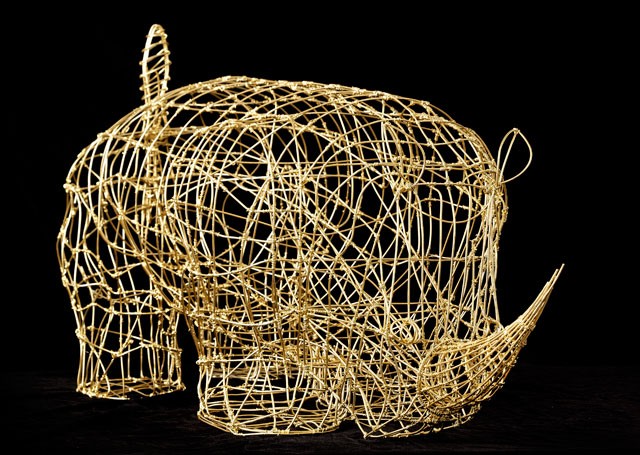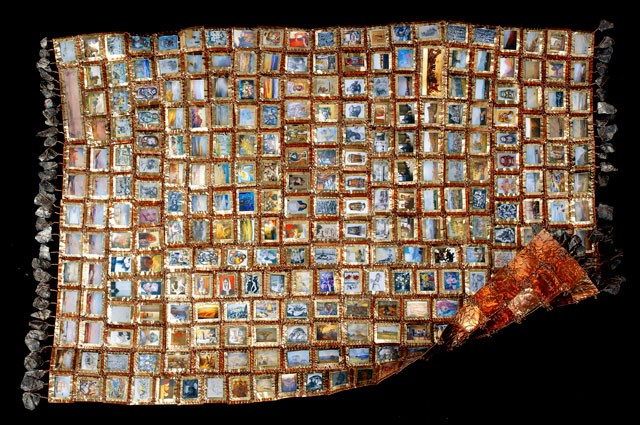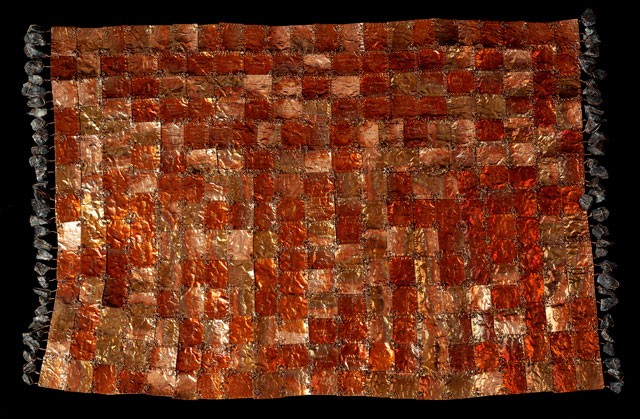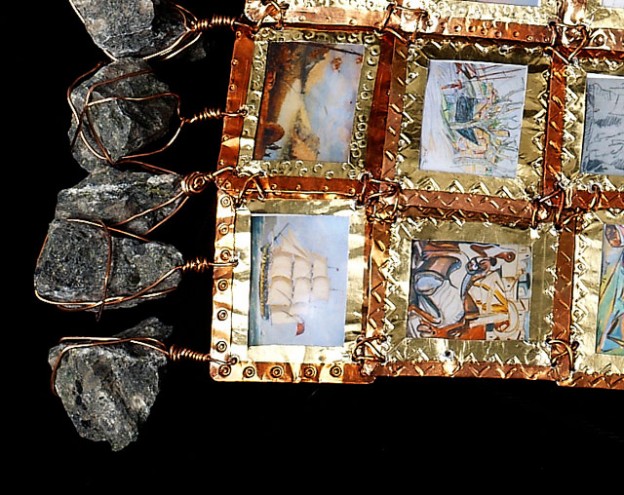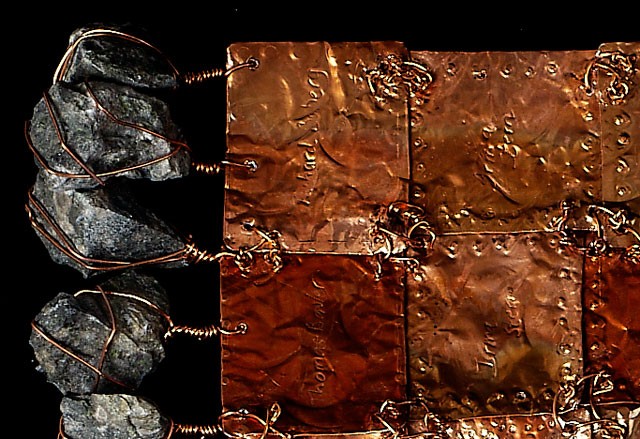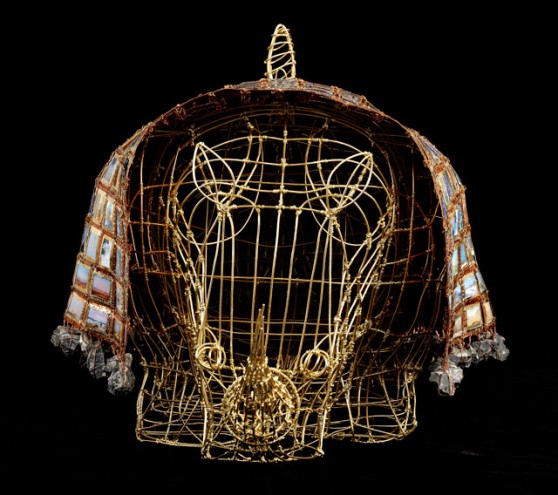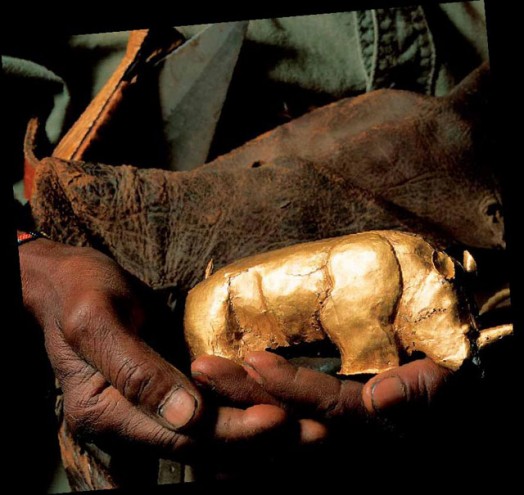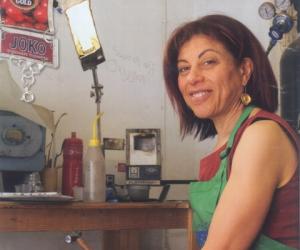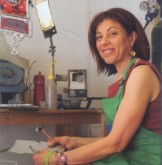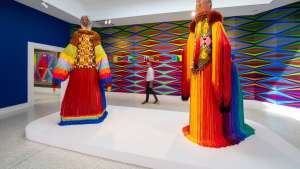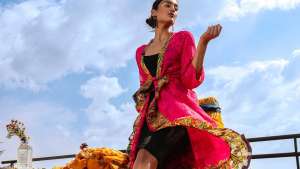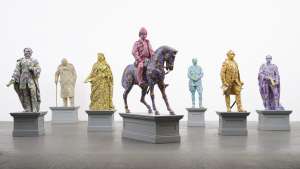The Brief
The brief was to take Paul Harris's Ellerman Collection of South African fine art and to recontextualise it in the 21st Century as a contemporary collection. I used the Mapungubwe rhinoceros, the oldest precoloninal South African gold object, as the intended vehicle that could do this. Taking it from its indigenous South African origins, and putting it together with a mantle comprising a Western type of art expression, i.e. paintings – I created a tertiary hybrid object.
The kimberlite symbolises the latency of a new object hybridity in South Africa, which can suggest new meaning through new cultural object juxtapositions. This is for me significant as a jewellery artist, particularly as I deal with making work related to South African contemporary jewellery and adornment expressions and the vindication of Mapungubwe, the true origin of gold-processing in South Africa.
The Creative Process
The work comprises 2 parts: the armature, which references the Mapungubwe rhinoceros, and the mantle, which consists of 250 images from Paul Harris's Ellerman Collection of South African fine art.
I foiled each image twice, in golden foil and then in copper foil, stamped the edges decoratively to distinguish each particular artist, and engraved each artist's name on the back of the foiled image. I connected them conceptually and joined them into a mantle to fit over the rhinoceros.
The wires of the rhinoceros armature serve as vectors, some extending from the tail through the inside of the body and out at the horn.
I used kimberlite, which is diamond bearing ore, shattered with a sledgehammer into pieces to make the fringe.
Artist Statement
In my work I want to convey a democracy and egalitarianism in the materials I use for my jewellery, and jewellery-related sculpture.
Now 18 years after 1994, I still believe in a fluxus space for 'New' jewellery regarding the current South African generation's freedom to express through making jewellery and jewellery-related objects.
Those who engage with this space can impact existing jewellery and fine art audiences, as well as nurture new populations of makers and viewers. This occurred in Europe, the US and Australia following the German and UK iconoclasts of the 1950s and 1960s.
There is so much in the South African adornment history of pain and pleasure – the precious-mineral mining, indigenous adornment objects, and the presence of European conventions in the aesthetics of South African precious manufactured jewellery. We have yet to vindicate our many South African jewellery competences in these early stages of our democracy.
In my own work I may use paradoxical materials. I pick up on the urge to adorn rather than the urge to express the material's monetary value, as a fait accompli – e.g. using gold and diamonds. Sometimes it is however my intention to celebrate or explore the limits of a material per se – even gold. But it seems to be that the material always has parity with the form or what my object is trying to say. In a sense the materials 'have' a dialogue with the form and to contribute to its integrity as an object.
I do centralise the moving, living human body as my artistic forum for designing, making and wearing jewellery rather than the static situation of jewellery that is rigid on the body. I am generally thinking about the kinesis of the jewellery on the body.
Although often contextualised with sculpture, the consideration for the living body as a plinth is a distinctive feature of jewellery when it is regarded as an art medium.
Intrinsic to my work is the immediacy of the communication that happens between the wearer and the viewer-gazer, as well as the self-communication or impact of the piece on how the wearer feels when wearing the object. Is it amuletic in changing the wearer's feelings? Or perhaps an expression of a social, personal or material status?
My sculpture and jewellery-making in recent years has been dedicated to the importance and vindication of the precolonial goldsmiths of Mapungubwe who were the original goldsmiths of Southern Africa from approximately 900 to1300 AD. Although we do have the Mapungubwe Presidential Awards, I believe the history of Mapungubwe has yet to be imprinted on our South African individual and collective identity. I have been advocating for many years in my writings and talks here and overseas that the forms of the Mapungubwe rhinoceros, beads and sceptre would make wonderful and appropriate hallmarks for South African gold jewellery.
Artwork Specifications
"Mapungubwe – A New Skin"
Courtesy Ellerman House Contemporary Gallery, Bantry Bay.
(Galvanised wire, gold paint, copper, anodised aluminium, paper, plastic, kimberlite)
Armature: 1,5 X0.47 X 0.47 metres
Mantle: 0.9 X 1.2 metres

